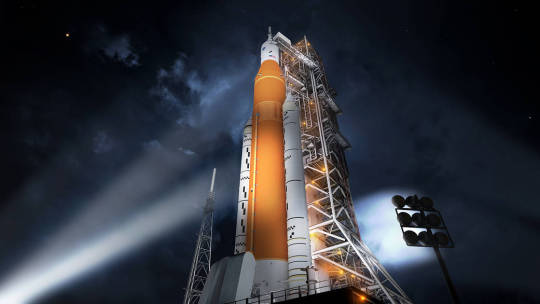
Our Space Launch System isn’t your average rocket. It is the only rocket that can send our Orion spacecraft, astronauts and supplies to the Moon. To accomplish this mega-feat, it has to be the most powerful rocket ever built. SLS has already marked a series of milestones moving it closer to its first launch, Artemis.
Here are four highlights you need to know about — plus one more just on the horizon.
Counting Down
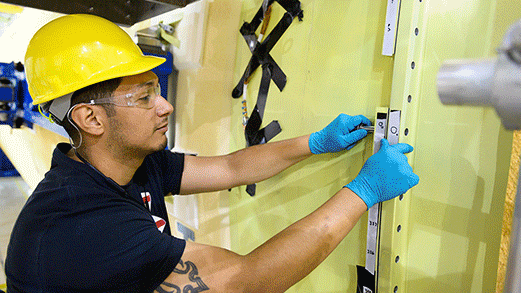
Earlier this month, Boeing technicians at our Michoud Assembly Facility in New Orleans successfully joined the top part to the core stage with the liquid hydrogen tank. The core stage will provide the most of the power to launch Artemis 1. Our 212-foot-tall core stage, the largest the we have ever built, has five major structural parts. With the addition of the liquid hydrogen tank to the forward join, four of the five parts have been bolted together. Technicians are finishing up the final part — the complex engine section — and plan to bolt it in place later this summer.
Ready to Rumble
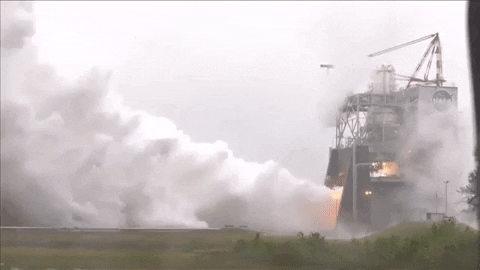
This August, to be exact. That’s when the engines for Artemis 1 will be added to the core stage. Earlier this year, all the engines for the first four SLS flights were updated with controllers, tested and officially cleared “go” for launch. We’ve saved time and money by modifying 16 RS-25 engines from the space shuttle and creating a more powerful version of the solid rocket boosters that launched the shuttle. In April, the last engine from the shuttle program finished up a four-year test series that included 32 tests at our Stennis Space Center near Bay St. Louis, Mississippi. These acceptance tests proved the engines could operate at a higher thrust level necessary for deep space travel and that new, modernized flight controllers —the “brains” of the engine — are ready to send astronauts to the Moon in 2024.
Getting a Boost
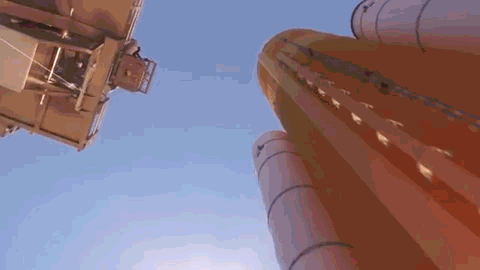
Our industry partners have completed the manufacture and checkout of 10 motor segments that will power two of the largest propellant boosters ever built. Just like the engines, these boosters are designed to be fast and powerful. Each booster burns 60 tons of propellant every second, generating a max thrust of 3.6 million pounds for two minutes of pure awesome. The boosters will finish assembly at our Kennedy Space Center in Florida and readied for the rocket’s first launch in 2020. In the meantime, we are well underway in completing the boosters for SLS and Orion’s second flight in 2022.
Come Together
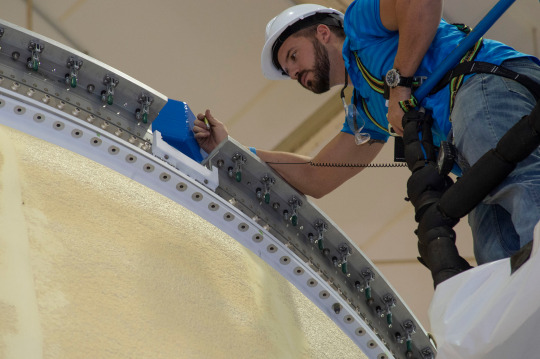
Meanwhile, other parts of the rocket are finished and ready for the ride to the Moon. The final piece of the upper part of the rocket, the launch vehicle stage adapter, will soon head toward Kennedy Space Center in Florida. Two other pieces, including the interim cryogenic propulsion stage that will provide the power in space to send Orion on to the Moon, have already been delivered to Kennedy.
Looking to the Future

Our engineers evaluated thousands of designs before selecting the current SLS rocket design. Now, they are performing critical testing and using lessons learned from current assembly to ensure the initial and future designs are up to the tasks of launching exploration missions for years to come. This real-time evaluation means engineers and technicians are already cutting down on assembly time for future mission hardware, so that we and our partners can stay on target to return humans to the Moon by 2024 — to stay so we can travel on to Mars.
Make sure to follow us on Tumblr for your regular dose of space: http://nasa.tumblr.com.



Комментариев нет:
Отправить комментарий